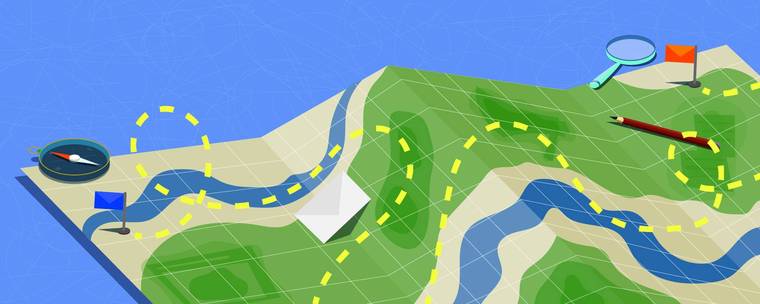
The buyer’s journey has changed — and not just for consumers. As buying behavior becomes more self-paced, digital and research-driven, many B2B companies are now:
This has many re-evaluating not only their sales and marketing strategies but also their technology.
That’s where mapping (taking inventory of and thoroughly assessing) your sales and marketing tech stacks comes in. A three-phase process can help set you up to make more strategic choices about the technology, people and processes that let you engage, convert and keep more customers.
When the two sides work as one, good things can and often will happen. According to LinkedIn, 78% of salespeople and marketers surveyed said collaboration between the two teams leads to improved customer retention. Another 54% said this kind of synergy boosts financial performance.
Along those lines, it’s important to align your sales and marketing teams on every step a prospect takes through their journey to becoming a customer. To start, identify databases of record for both lead and customer data. Next, determine what data points you have currently to develop personas that represent your ideal customers, and identify what missing data points could help you build a more robust customer profile.
After assessing your data needs, identify your lead sources and map out the stages a prospect progresses through to become a marketing qualified lead (MQL) and a sales qualified lead (SQL).
Lastly, establish what a conversion means to both teams and what key performance indicators (KPIs) you need to track to gauge the success of your marketing campaigns and sales strategy.
Aligning both sales and marketing teams on customer strategy accomplishes two key objectives:
To build a strong relationship with your current and future customers, your shared strategy should plan to make technology investments that support and enhance synergy between your business and your customers throughout their lifecycle. For this reason, a CRM platform becomes an invaluable tool for driving growth by bringing much-needed automation to the entire sales cycle and integrating well with other areas of your business.
Additionally, your strategy should:
Based on what emerges from the previous phases, assess the current and future state of your tech stacks. When taking a deeper look at your sales and marketing tools, there are three must-dos:
1. Uncover point solutions in your current technology stacks. These are solutions that have essentially one purposeful use case. Point solutions may sometimes be replaced with existing technology in your organization that can bring greater efficiency. Or the use case itself could be refocused into new processes as part of a more robust platform like a CRM.
2. Conduct a gap analysis. Identify what technology and skill sets are missing from the puzzle to help you track and analyze customer interactions.
3. Look for integration opportunities. This includes identifying which platforms:
Finally, once you’ve aligned on process, strategy and desired tool set, expect an ongoing implementation process, with frequent adjustments and optimizations along the way.
Since the buyer’s journey has changed forever, mapping your tech stacks is more important than ever. Composed of sales, marketing and technology specialists, Hileman Group can help you create and implement your next marketing program with leading martech tools so you can engage, convert and keep more customers.
To discover how we can help you turn leads into loyal customers, contact us.
The original version of this page was published at: https://www.hilemangroup.com/Thought-Leadership/Hilelights-Blog/Mapping-Your-Sales-and-Marketing-Tech-Stacks
Global Prairie is a purpose-driven marketing firm crafting business-building solutions that help our clients drive social impact and cultivate a healthier world. One part creative agency, one part... Read more
To many marketers, the thought of creating a content strategy can be as intimidating as a blank page is to a writer. Everyone knows they need a strategy, but plenty of smart marketing ...read more
In today’s world, with information at one's fingertips, and the variety of choices out there for healthcare, healthcare organizations must nurture relationships with current ...read more
Did you know 1 in 20 searches on Google are healthcare related? Paid search is a great way to reach people who are active in their healthcare selection process. It is a proven digital ...read more
Learn how increased efficiency meets audience personalization in digital marketing automation. COVID-19 spurred a wave of modernization efforts to deliver patients the best possible ...read more